
Related
Salazar died after being shot by tear gas projectile shortly after he was covering the Chicano anti-Vietnam War Moratorium rally in East Los Angeles in 1970. He was a reporter and columnist at the Los Angeles Times and the news director of Spanish-language television station KMEX in Los Angeles. Juan Gonzalez and Amy Goodman reflect on his life, 35 years after he was killed. [includes rush transcript]
- Amy Goodman and Juan Gonzalez.
Transcript
AMY GOODMAN: Last night, I went to Santa Cruz, U.C. Santa Cruz, the University of California, where they were honoring —
JUAN GONZALEZ: And you made it back in time for this show, which is a miracle in itself.
AMY GOODMAN: Well, they were honoring Ruben Salazar. And I think for young people who are listening to this program, they may never have even heard his name, but this is the 35th — this year is the 35th anniversary of his death. Ruben Salazar, who was a columnist with the Los Angeles Times and was the news director at KMEX. You certainly know and have written about Ruben Salazar. Can you talk a little about him and his significance?
JUAN GONZALEZ: Ruben Salazar is probably one of the most well known Latino journalists of the 20th century, at least in the Latino community and among Latino journalists, generally. He was a reporter for the Los Angeles Times for many years before becoming a columnist, then news director at KMEX. He was killed in August of 1970 as he was covering the massive Chicano moratorium protests against the Vietnam War, which I think is still the largest demonstration of Latinos in American history. And he was shot by a projectile by a sheriff, a Los Angeles sheriff, and hit by a tear gas projectile and killed.
AMY GOODMAN: It’s an amazing story. The sheriff’s deputy shot into a bar. He had just come from this very heated protest and was with his crew from KMEX, sitting having a beer, and they shot this ten-inch tear gas projectile into the bar
JUAN GONZALEZ: Right.
AMY GOODMAN: Hit his head, killed him instantly.
JUAN GONZALEZ: Yes. Yes. As a result of that, actually, the California Chicano News Media Association, which was the first association of professional Latino journalists, developed in the wake of Ruben Salazar’s death and CCNMA, as it’s known in California, eventually gave birth to the National Association of Hispanic Journalists.
AMY GOODMAN: Of which you were president.
JUAN GONZALEZ: Of which I was president a couple of years, for two years. So, this — actually, the death of Ruben Salazar really sparked the organization of Latino journalists around the country, and there are many organizations, including our own, who have scholarship funds in his name. He was well loved throughout the Latino community of Los Angeles, but has become sort of a martyr figure among Latino journalists in terms of his work, his dedication to the Latino community and his journalism.
AMY GOODMAN: People are still calling for opening the investigation into his death, because no one was held responsible. But also in this 35th anniversary of his death — died August 29, 1970 — there is a movement to have him remembered on a stamp. I’m not sure how you put a giant on a stamp, but the U.S. Post Office has done it in the past.
JUAN GONZALEZ: Yes, they did. They have done it with Malcolm X. They’ve done it with quite a few figures that you wouldn’t expect to find on U.S. postage stamps, yes.
AMY GOODMAN: Ruben Salazar, 1928 to 1970, remembered by many and just perhaps going to be learned about by many young people. He, last night, two young women made a film about him. They played an interview that was done with him on television. They asked if he was an advocacy journalist, the network reporter. He said, do you mean do I advocate for my people, a people who have been silenced in the rest of the media? He said he was guilty of that.



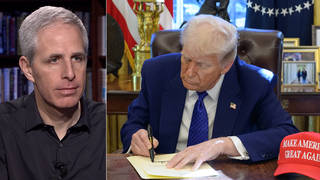
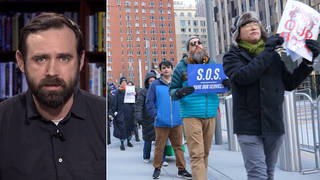

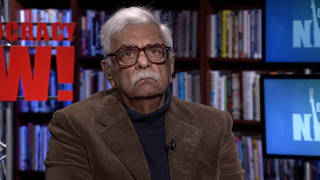
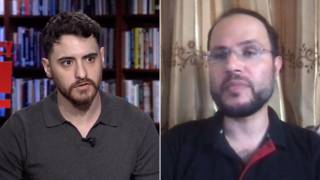


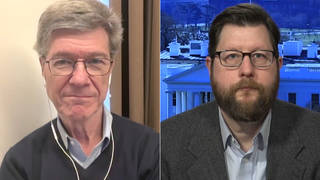

Media Options